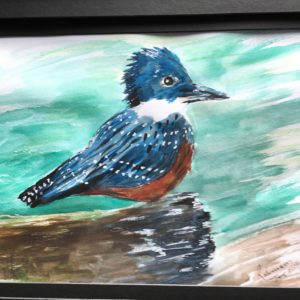Hope at Year’s End
 I play a little catch up here in the holiday hiatus. Catching up, that is, on reading of magazines like The Christian Century which tend to pile up on my desk.
I play a little catch up here in the holiday hiatus. Catching up, that is, on reading of magazines like The Christian Century which tend to pile up on my desk.
In a December 4 issue I found a piece by Debie Thomas, “Hope sits in darkness,” that was to me deeply moving. It is powerful reminder of the real nature of hope. Hope when there is no triumphant story of transformation, success or miracle.
Thomas writes of her journey in response to a bike accident her now 17-year-old suffered two years ago. “For two years my son has been out of school, unable to participate in the extracurricular activities he loves, and unable to remain upright and out of bed for longer than four or five hours at a stretch. He spends most of his time in his darkened bedroom with ice packs on his forehead. He faints and feels nauseous a lot, and at this point, it’s not clear when or how he’ll complete his education. We’ve seen several physicians and tried many medications and alternative therapies. But the headaches persist.”
In light of this situation Thomas describes how her own experience and understanding of hope has changed. Initially, in the wake of her son’s accident, her hope and prayers were “focused, frantic, and frenzied. It was hope based entirely on results, on causes and effects, on miracles and magic.” She prayed, of course, for healing, for results. But what of hope when there is no healing, when there are none of the outcomes for which we long?
Let me quote Thomas at length on how the meaning of hope changed for her — a change that has implications for us all when discouraged or disappointed.
“Two years in, everything I understand about hope has changed. Of course I still pray for my son’s headaches to go away. But the hope fueling the prayer is softer now, quieter. It’s an unclenched hope, one set free from expectations, clamoring, and frenzy. It’s a hope grounded in things not seen, in tiny seeds planted in dark soil; in small gestures of love, courage, friendship, and solidarity; in streams that flow in the desert; in the quiet resurrections that keep my son and our family going.
“When I read biblical stories of hope, the ones that resonate are no longer the stories of epic victories and grand celebrations. Those are lovely, but they don’t speak to where I live as the mother of a son in chronic pain. Instead I take hope in the story of Sarah, 99 years old and pregnant, laughing her head off because she thought for sure she was too old and wise and jaded to ever again be surprised by God. I take hope in the story of Hagar, a slave woman dying of thirst in the desert, who even in her abandonment becomes the first person in the Bible to name God. I take hope in the story of Hannah, who cries so hard and so earnestly in the presence of God that people take her for a disrespectful drunk. I take hope in the story of Mary, the mother of Jesus, who ponders hard mysteries deep in her heart. I take hope in the persistent widow who pounds the door of a corrupt judge day after day after day, insisting on justice until she drives the man nuts. I take hope in the story of Mary Magdalene, who refuses to budge even when evil, tragedy, death and despair seems to have won the day.
“What these stories suggest to me is that hope isn’t about magical results — it’s about the long haul and the long darkness. Hope is robust and muscular and ferocious and long suffering. Hope never gets so cynical that it can’t be surprised. Hope finds and names God in the world’s most desolate places. Hope kneels on hard ground and yearns without shame. Hope ponders and meditates and ruminates. Hope gets in apathy’s face and says, ‘No. Not good enough. Try again.’ Hope sits in the darkness — outwitting torture, humiliation, crucifixion, and death — until finally a would-be gardener shows up at dawn and calls us by name.”
Hope differs from optimism. In some ways what Thomas describes as her initial experience was more like optimism, tethered to outcomes. Hope seems to be a way of being and living that persists and endures in the face of evidence to the contrary or outcomes that have not come. In this sense, it is the line between hope and faith blurs.
“Hope,” wrote Emily Dickinson, “is a thing with wings.” Sometimes in the year past (like most every year), my hope has taken wing and flown away. Other times it has flown steadily. It is nurtured by stories like those Thomas calls upon. It is nurtured by friendships, family and the beauty of God’s created world. And it is nurtured by honest words born of hard situations, like those of Debie Thomas.
May hope persist and endure in me, in you, in us all as we enter this new year and new decade.
(Watercolor of Kingfisher is a sketch/ watercolor I did this year).
![Anthony B. Robinson [logo]](https://www.anthonybrobinson.com/wp-content/themes/anthonybrobinson/images/logo.png)
![Anthony B. Robinson [logo]](https://www.anthonybrobinson.com/wp-content/themes/anthonybrobinson/images/logo-print.png)